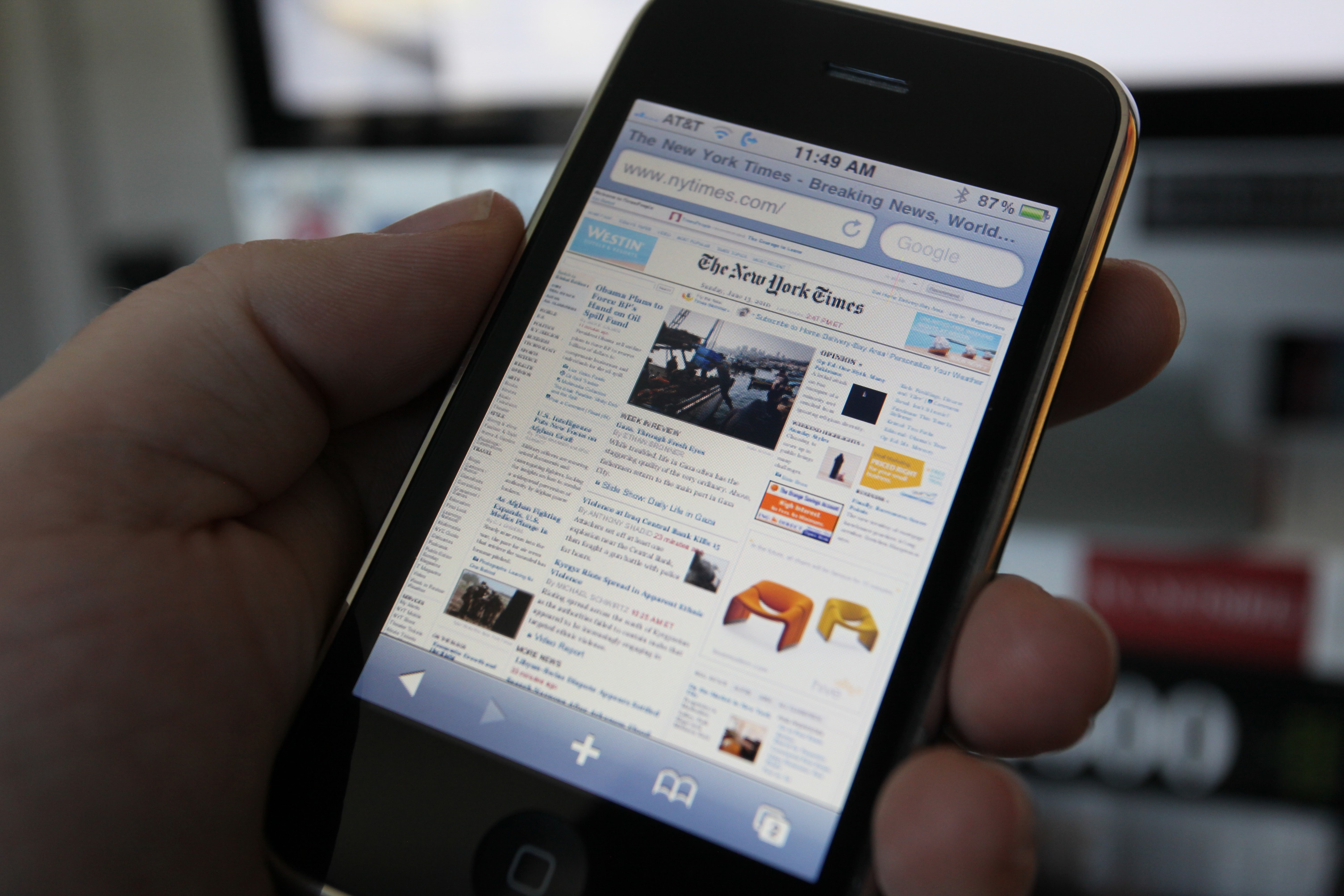Editor’s Note, March 29, 2010: For about six weeks during summer 2009, and following my April 30 layoff from eWEEK, I put out my shingle as an independent analyst. I had worked as an analyst for JupiterResearch from 2003 to 2006. But the role just didn’t feel right, particularly given the economy. This post represents a feature of “quotes” for journalists to use in their stories.
This second installment of Quick Quotes focuses on Apple’s announcements from the Worldwide Developer Conference.
Here is my quick take:
iPhone 3GS
At $99, iPhone sales volume will go nuclear. The blast could literally incapacitate every other smartphone now sold or coming to market. Think of App Store as Apple’s electromagnetic pulse.
June 19 iPhone availability will disappoint many existing iPhone owners, who must wait until end of June or mid July before qualifying for subsidized pricing.
New 3-megapixel camera and video capture capabilities are, at best, catch up with other smartphones. Nokia, Samsung and Sony are already moving to 8-megapixel cameras and beyond.
Where Apple will distinguish iPhone 3GS photo and video capabilities is ease of use. The iPhone may not have the hardware as, say, the Nokia N97. But Apple is sure to make photos and videos easier to capture, use and share.
Apple is taking the right platform development approach by releasing APIs so that developers can build video capabilities right into their applications.
Miscellaneous
Apple’s stock dropped by nearly five percent during the early WWDC keynote. Perhaps Wall Street is freaking out over $29 Snow Leopard upgrades and Mac laptops entry-level pricing still well above $1,000.
Apple marketing gurus put on the charm by negatively comparing Internet Explorer 8 to Safari 4. That’s a misdirection. The browser Apple should worry about is Google Chrome, which is fast, slick, largely standards compliant and likely to take away user share from Safari before Internet Explorer.
iPhone 3.0 OS
Apple boasts three types of push notifications. That’s three types too many. Apple should allow background applications, which is standard for Google, Microsoft, Nokia, Palm and Research in Motion mobile operating systems. Push notifications aren’t trailblazing so much as trailing behind competing features on other smartphones.
The new Find My iPhone feature is a smart way for Apple to upsell smartphone users to MobileMe, which costs $99 a year.
Apple claims 40 million iPhone OS capable devices, which is solid number for rapidly expanding App Store platform.
Apple’s exclusive distribution deal with AT&T is starting to be a hardship for iPhone. MMS will be available in other countries before United States. iPhone tethering also will be available elsewhere first, too.
The new ZipCar iPhone application demonstrates hardware, software and services utility as a platform. People can even unlock their ZipCar using the iPhone app. This kind of integration is what sets iPhone and App Store far ahead of other smartphone platforms.
Snow Leopard
Apple’s Snow Leopard pricing strategy is nothing short of shocking: $29 or $49 for a Family Pack. That pricing is for Leopard users. Clearly Apple wants its install base to move quickly to Mac OS X 10.6
Apple’s Snow Leopard pricing—$100 less than previous versions—will hurt software margins. Mac OS X upgrades have been easy money that Apple suddenly is willing to sacrifice. It’s a volume play, pricing so low that Apple must hope to make up in number of upgrades what it loses per copy.
Snow Leopard’s September release means Apple gets in front of Microsoft, which plans to launch Windows 7 on October 22nd. If for no other reason than marketing, Apple scores a coup over Microsoft.
Everyone should ask why Apple is willing to sell Snow Leopard for so little? The strategy clearly is about ramping up users quickly to the new platform. It’s about something coming next—perhaps App Store for Macs and iPhone?
There’s the smell of fear in Snow Leopard’s $29 upgrade pricing. Could it be Windows 7? Apple should be afraid. Microsoft and its partners will blanket the planet in Windows marketing this autumn. Everywhere you turn will be open Windows.
New MacBook Pricing
Apple isn’t giving up much of anything at the low end. People will still pay a premium to join the Mac Club. But the price for a substantially better Mac laptop is now much lower than yesterday.
It makes sense that Apple added “Pro” to the 13-inch MacBook name. The entry-level MacBook already packed Pro features.
The newest Pro model brings MacBook pricing down $100 to $1,199 or $1,499. For many consumers, the price will still be too high to join the Mac Club. Mac pricing is sweet music to Microsoft and its Windows 7 PC partners. The Windows symphony starts October 22nd, when Windows 7 officially goes on sale.
About a month ago, I said that Apple would need to bring MacBook Pro entry-level pricing down from $1,999 to $1,799. Apple did better by reducing the price to $1,699. There’s good value for the price, but it’s still a high price to pay in this economy.
Apple’s netbook equivalent is, for now, the MacBook Air. Like netbooks, Air is small and light but with more full laptop features. The $300 price cut, to $1,499, should open up sales volume.
Even at $1,499, MacBook Air costs $1,000 more than most Windows netbooks.
Photo Credit: Robert Scoble
